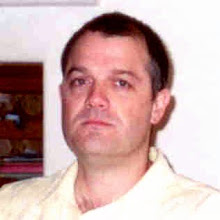If you need more evidence that energy storage is much more than lithium ion batteries, take a look at the latest smart-grid utility storage projects.
The Department of Energy on Tuesday announced that $620 million in stimulus funding is going to 32 smart-grid programs, which will be coupled with another $1 billion in private money. A total of $770 million from government and industry sources in the next few years will go to energy storage, giving a number of storage technologies a dose of real-world experience. (See this PDF for details.)
Notable in the list is the prominence of compressed-air energy storage and flow batteries, two technologies rarely discussed just a few years ago. Also in the mix are flywheels and using batteries for distributed energy storage in communities.
It's unlikely that all the DOE-aided projects will immediately prove to be commercially viable. But storage has clearly emerged as a key component in the vision of the smart grid. A number of start-ups are developing technologies they hope can address a specific storage application or undercut pumped hydro, considered the cheapest form of utility storage, on price. With pumped hydro, water is pumped uphill and released at peak times to run a generator. But its use is limited by geography.
Many of the 16 Energy Department power storage grants were focused on storing wind power, which is a variable source of energy. In California, for example, utility Pacific Gas & Electric plans to store the power generated by wind turbines at night, when turbines are most productive in underground caverns. During the day, when grid demand is higher, the air is released and passed through a turbine to make electricity.
The advantage of underground compressed air storage is that it can be cheaper than batteries and can store many hours worth of energy. PG&E forecasts that its Kern County, Calif., project can deliver 300 megawatts of power for 10 hours, enough to supply tens of thousands of homes.
Another novel technique is using metal tanks to store compressed air, a technology being developed by a Dartmouth College spin-off SustainX. The compressed air is released to run a hydraulic motor that drives a generator to make electricity.
Read more: http://news.cnet.com/8301-11128_3-10405069-54.htmlWant to help with Global-Warming? Please visit http://www.whiteearth.org
Please become a fan of the Facebook page http://www.facebook.com/pages/WhiteEarthorg/119367692642 and http://www.facebook.com/pages/WhiteEarth/165767310764
Become a friend on Facebook page http://www.facebook.com/christopherbeau
Follow me on Twitter http://www.twitter.com/christopherbeau
Help with supporting WhiteEarth.org by buying art on http://www.artsymphony.com 100% of proceeds go to WhiteEarth


No comments:
Post a Comment